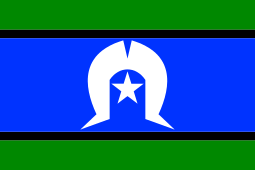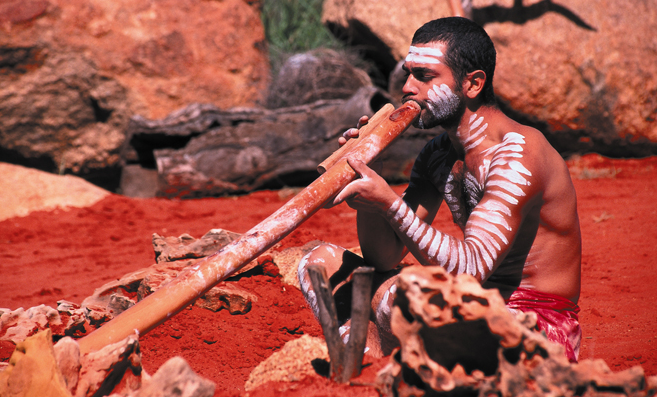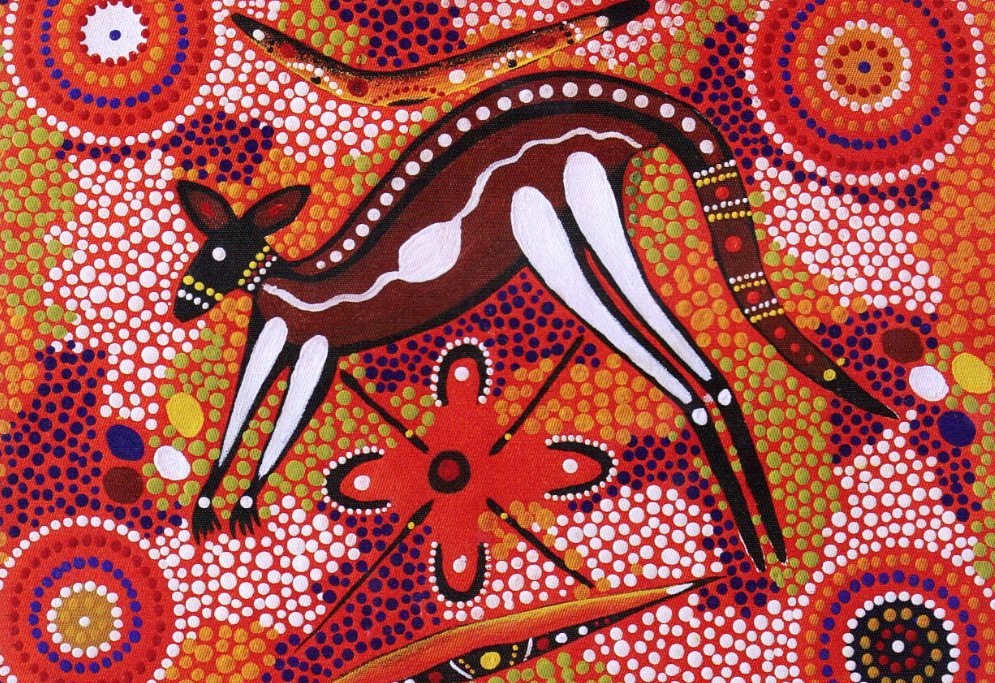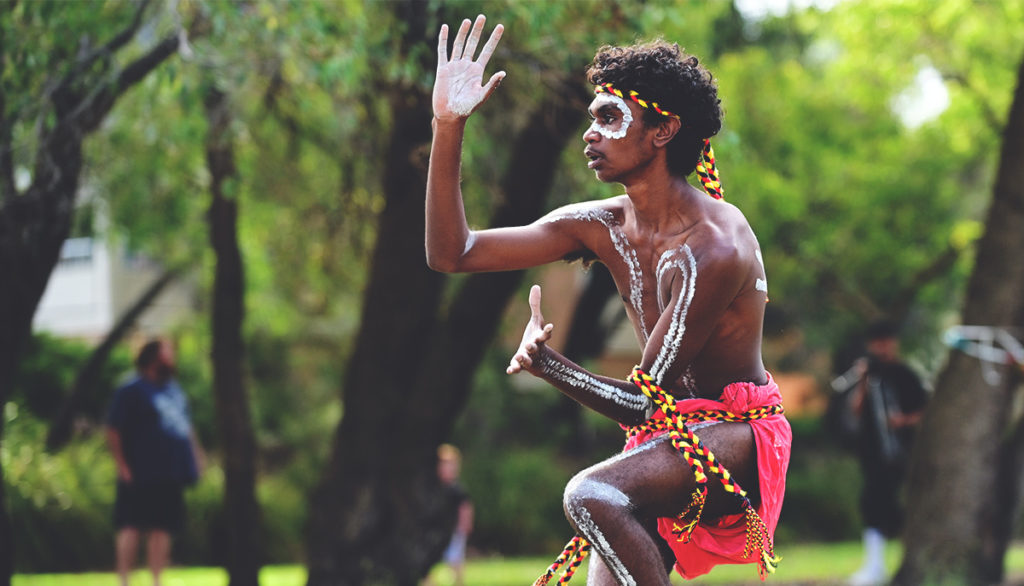Perhaps while studying in Australia, you’ve heard someone say at the beginning of a speech or a meeting, ‘we acknowledge the Traditional Owners of this land’.
This is called ‘Acknowledgement of Country’ and it’s a way of showing respect to Australia’s First Peoples, one of the oldest living populations in the world.
There are many different First Nations cultures
Aboriginal peoples and Torres Strait Islander peoples are the First Peoples of Australia. Aboriginal peoples inhabited the whole of Australia, and Torres Strait Islander peoples lived in the islands between Australia and Papua New Guinea.
Before Australia was colonised, it was home to over 500 different First Nations groups – so there’s no single Aboriginal and Torres Strait Islander culture, there are many.
First Nations cultures do have some common themes, though, such as the Dreaming and a deep connection to the land.


They also have many different languages
It’s estimated that there were around 250 different languages spoken in Australia before the British arrived in 1788.
Up until the 1970s, policies implemented by the Australian Government prohibited or discouraged First Nations Australians from speaking their own languages. Because the First Peoples of Australia’s dominant form of record-keeping was by passing down their traditions and language through word of mouth, these policies resulted in the loss of many First Nations languages and cultural history.
At the time of British invasion, roughly 250 First Nations languages were spoken. Today, only 120 First Nations languages are still spoken and many of these are in danger of disappearing.
In 2016, the Australian National Dictionary listed around 500 words which were in common usage coming from 100 different Aboriginal and Torres Strait Islander peoples’ languages. Many of them are the names of plants, animals and places, so you probably already know a few like:
- Kangaroo
- Wallaby
- Canberra (which means meeting place)
Their spirituality is highly complex
The Dreaming or, the Dreamtime, is a similarity that runs through different First Nations belief systems and is a concept that is often not easily understood by non-First Nations people. The phrases Dreaming and The Dreamtime are English translations that don’t capture the true meaning.
There is no afterlife in First Nations religions, no heaven or hell, which sets them apart from many other world religions. The Dreaming is the source of life philosophy and morality and while it’s intertwined with stories of creation, is also a constant state where both the past and the present exist together. In attempting to explain the Dreaming, anthropologist W.E.H. Stanner used the term ‘everywhen’.
There are many places you can visit to learn more about Aboriginal and Torres Strait Islander culture

There are still many places in Australian where you can get in touch with Aboriginal and Torres Strait Islander cultures respectfully. Some of them are hard to get to but well worth the visit.
Probably the most well-known place is Uluru. The ancient monolith is sacred to the Yankunytjatjara and Pitjantjatjara people. It’s visited by thousands of people every year. We recommend one of the beautiful walking tours you can take around Uluru.
The Flinders Ranges in South Australia have ancient rock paintings that are accessible to the public, as does Ku-ring-gai Chase National Park in NSW and The Grampians National Park in Victoria.
To learn more about Indigenous Australian culture and history, we also highly recommend The Australian Museum’s website.
The upcoming Indigenous Voice to Parliament referendum
The Australian Government plans to hold a historic referendum, called the Indigenous Voice to Parliament referendum, between October and December this year (2023). Aimed at amending the constitution to better represent Australia’s First Nations peoples, this move responds to the 2017 Uluru Statement from the Heart, which called for an Indigenous Voice to Parliament. The Voice seeks to address the marginalisation of Aboriginal and Torres Strait Islander peoples by providing them with an advisory role in legislation that impacts their communities. While international students cannot vote, their understanding and engagement with the issue can contribute to a more inclusive and empathetic Australia.
Learn more about the Indigenous Voice to Parliament referendum.





